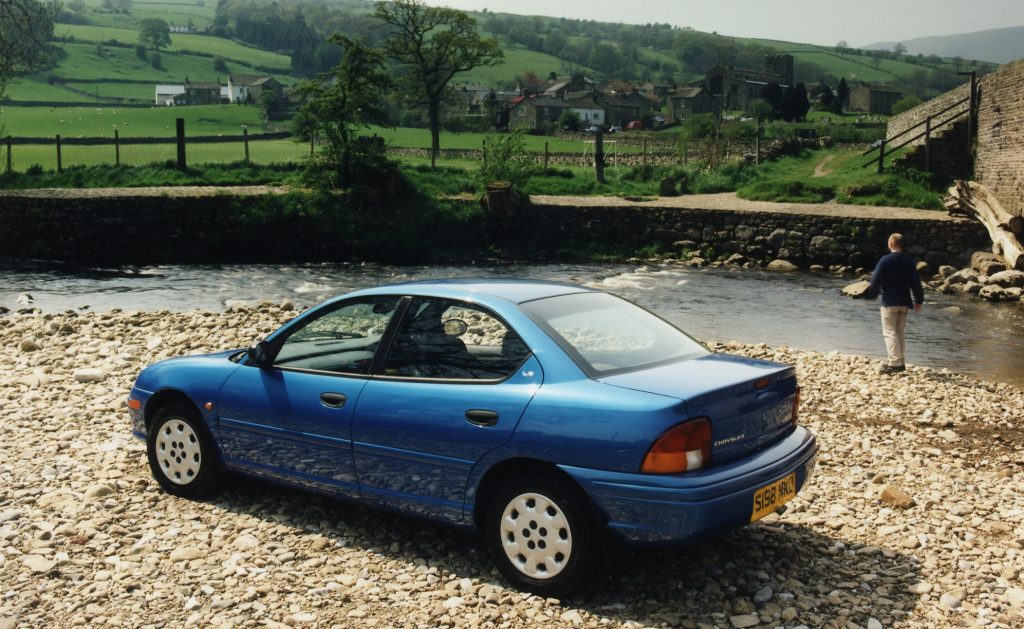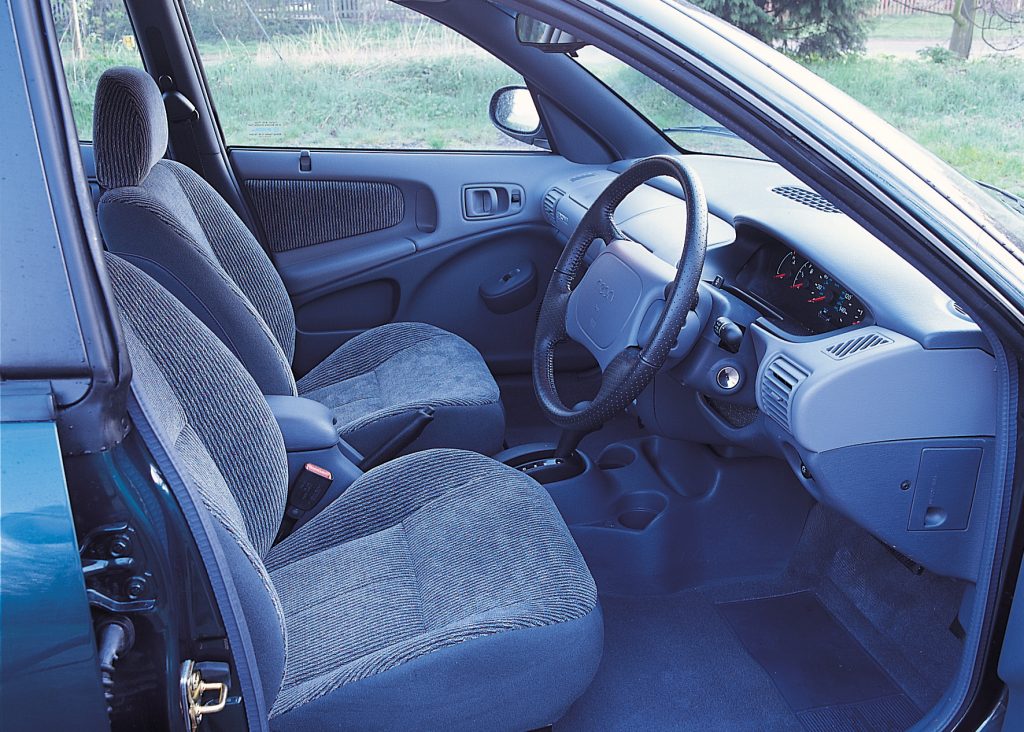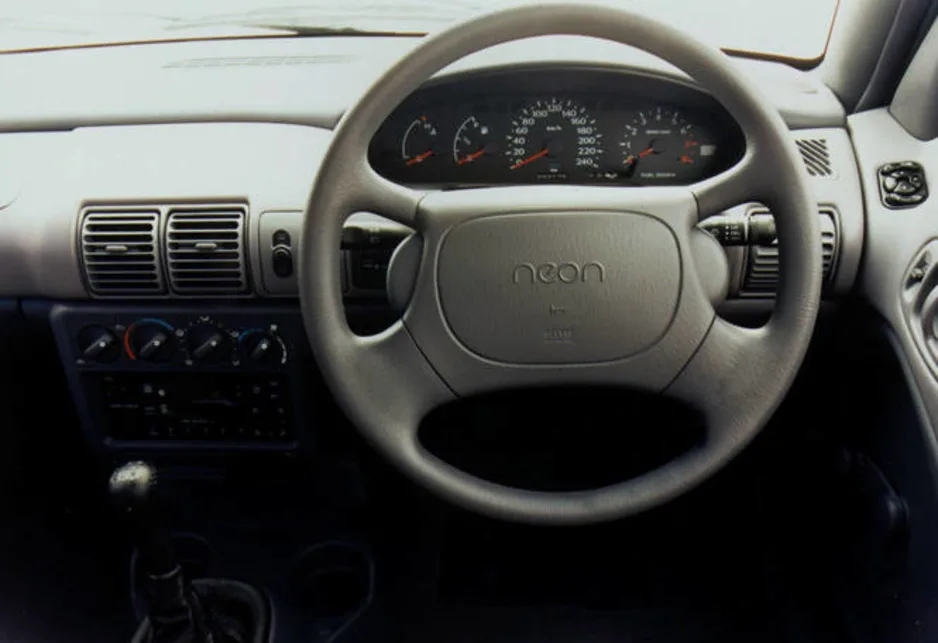Using a laundrette or vending machine in a far-away country always calls for a few seconds’ pause to get a measure of the weird brand names and bizarre coin slots. It always used to be the same stepping into an American car.
Before grasping the column-mounted gearshift it felt uncertain, alien (that US immigration term, intended to unsettle). The warning lights and audible alerts gave the impression of needing an adaptor plug so a Brit could work them.
Therefore my overriding impression of settling nervously behind the wheel of a Chrysler Neon in this country back in ‘97 was how, well, rather un-American it felt. If I’d expected radio reception with a choice of 50 country ‘n’ western and classic rock stations, I was mistaken. Plus, it felt fast and nimble, and most of all it was barely any longer than a Vectra for considerably fewer dollars… sorry, pounds.
Actually, it shouldn’t have come as too much of a surprise. This super-compact US starter-model was conceived at the time of Bob ‘Car Guy’ Lutz’s steerage of Chrysler Corporation. And he was not a fan of mediocre Detroit mush. For Chrysler’s first attempt at a small car in 17 years (the last one had been the Anglo-American Talbot/Plymouth Horizon) the design team aimed for something that made young drivers feel properly zestful, and from early on the tough-on-ourselves strategy was to include sales in Japan, where many of the Neon’s rivals would arise. A US sedan created for export markets; now that was a novelty, and Lutz even unveiled it in Frankfurt in 1993, with a live satellite link to eight US cities.
They did a good job of it, too, spending $1.3bn on development. The scaled-down ‘cab forward’, long-wheelbase look of Chrysler’s larger Dodge Intrepid and Eagle Vision was keenly executed with the addition of cheeky, circular headlights and a high-lined, truncated boot.
It came to the UK in June 1996. It would have been fashionable at the time to slightly denigrate the car, which was sold as a Chrysler Neon in this and 17 other European countries. It did not have the chassis polish of a contemporary Volkswagen, Peugeot, or first-gen Nissan Primera. The priority for engineers at Chrysler’s Auburn Hills labs was to make the front-drive Neon enjoyable on smooth and straight US roads, so when you take that into account for the second-rate handling you understand the Neon a little better.
It was definitely no slouch, though. No substitute for ccs, even at this size, and it came with a 16-valve 2-litre twin-cam, four-cylinder engine producing 131bhp, which gave the potential for 0-60mph in under 9sec and a 125mph top speed. Contemporary road test reports suggested a bit less in the real world. This spirited performance was delivered with a fair degree of racket, mind, and the three-speed automatic option was of the slightly clunky, old-school variety. Fuel consumption turned out to be surprisingly good, giving 42mpg when cruised in open freeway mode along the, er, A1M.
Quite apart from the Neon’s singular character, likely to deter as many as it attracted, its value was tremendous. At £12,995 for a 2.0 LX, at its UK launch in June 1996, you not only received a Mondeo-size car for Escort dosh, but electric front windows, twin airbags, ABS, a decent stereo-radio, central locking and air-con, while the auto was a no-cost option, and – cue fanfare – the car came with some of the first ever electrically-folding door mirrors.

As Japan had been part of the Neon masterplan from the start, right-hand drive cars for the UK were no problem for the Belvedere, Illinois factory (there was a two-door coupé, made in Mexico, but not exported here). Suspension settings were tuned for a sportier, more European feel.
With that classic bugbear of successful Western capitalism, though, there just weren’t enough of them. Chrysler’s UK dealer network was built on selling Jeeps and the very occasional Viper, so Neon supplies were modest so as not to upset this high-value applecart. As a result, there was an instant shortage; Chrysler Jeep Imports scrapped its TV ad campaign after just weeks because there were too many potential buyers! Any Neon, from base SE to the leather-upholstered GLX and sporty CS, became a real jewel on the secondhand market in the late 1990s. All of which made any carping about its minor dynamic shortcomings academic.
I gave my road test car back and then hardly ever saw another one, not even of the all-new version that arrived in 1999. And after that the totally out-there PT Cruiser made everyone forget about this small, gutsy slice of American pie. Surprisingly, there are about 1000 Neons still going in the UK, but when one does surely make the lawns at the Festival of the Unexceptional, it’s bound to pull a crowd of fascinated well-wishers for a 25-year old survivor that was once surprisingly desirable.
Read more
Cars That Time Forgot: Vector W8
Cars That Time Forgot: 1963 Chrysler Turbine
Six classic European sports cars with American V8 engines















We had two of these cars over a six year period after deciding we no longer wanted to commute in the motorway traffic jam in a manual transmission car. At that time most European cars with automatic gearboxes cost considerably more than the manual, however, the Neon came fully loaded and with automatic as a no cost option. They were guaranteed for three years, after which they fell apart, especially the suspension, which was somewhat agricultural, but the dealer was only too pleased to supply another on HP. We graduated to a Renault Scenic after that and have always had an auto in the garage since.
I’ve just made the decision on keeping my late mother’s Neon. Have to admit when she bought the car new in 1998 I really didn’t like it much. kind of odd looking, green, and a bit basic. But ideal for her as it’s auto and easy to drive.
She loved the car and always made my brother keep it in good order.
It’s had a nice life being sat in a garage most of it.
I’ve grown to like it the more I’ve used it, and often get asked what it is.
Hopefully I can bring it along to Hagerty’s Festival of the Unexceptional.
That’s great to hear James, and the Neon would fit right in at the Festival.